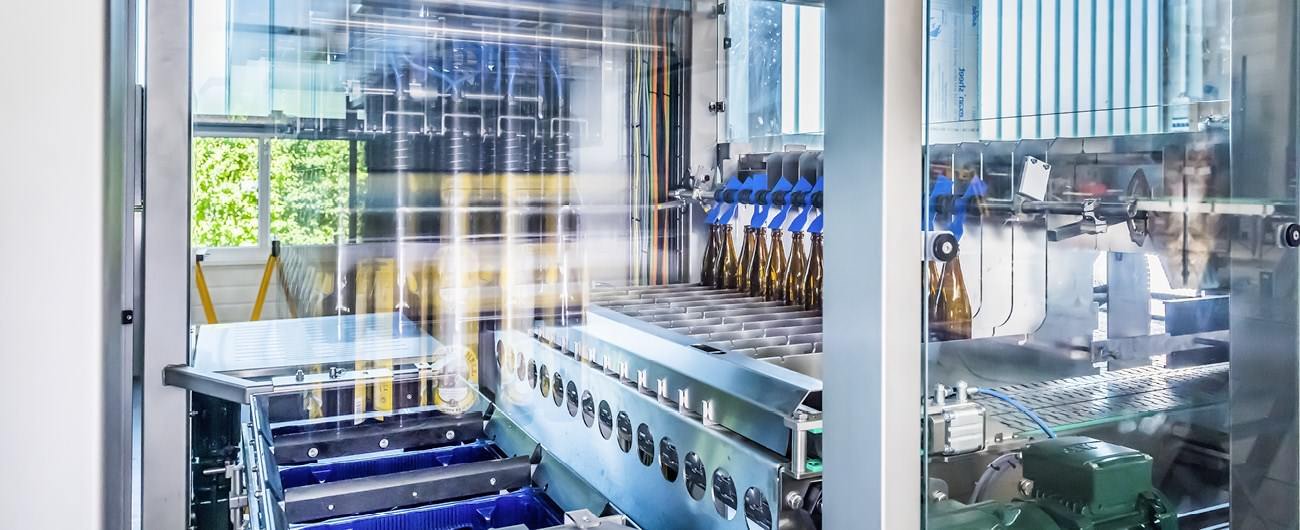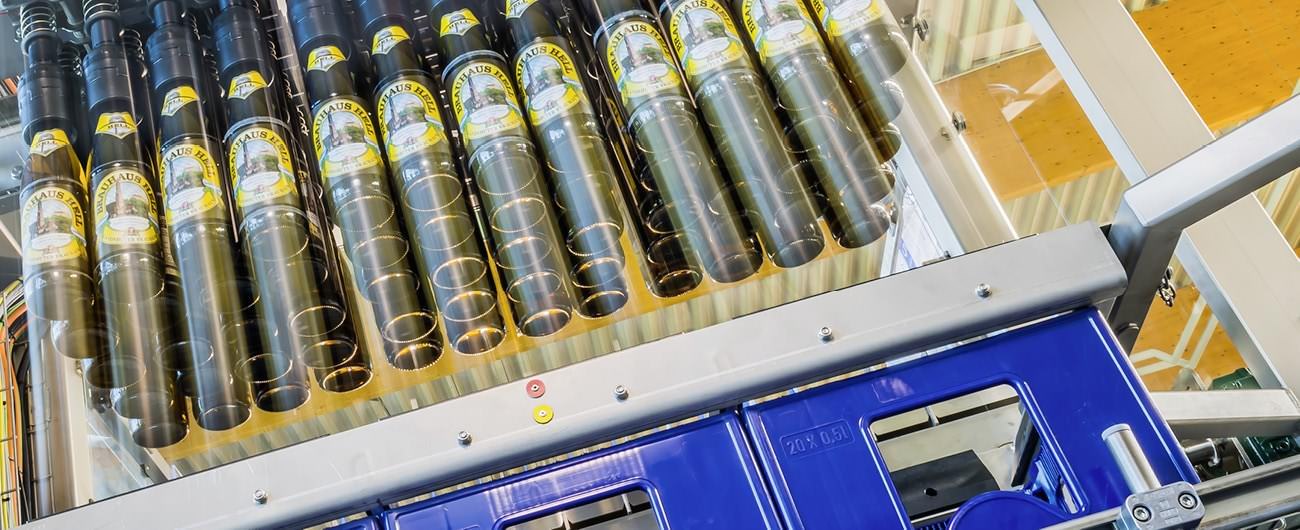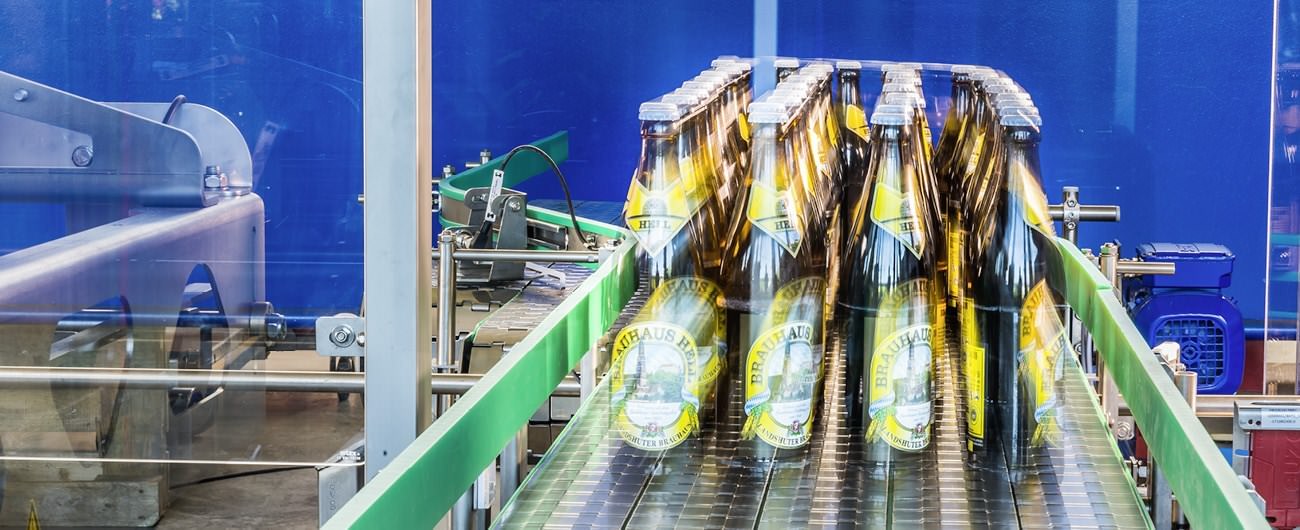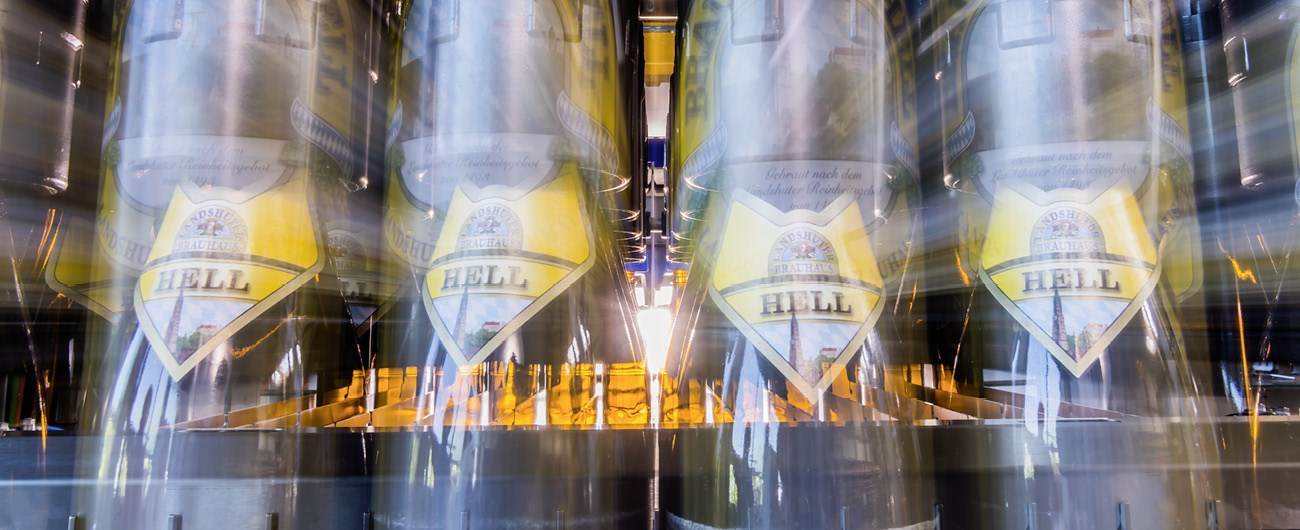Krombacher Brewery commissions BMS Maschinenfabrik
How we introduced a new magazine concept at Krombacher to enable decoupling of the sorting and filling systems from each other. Find out more in this BMS report!
A steadily increasing level of individualised packs for returnables has been creating major challenges for Germany’s largest private brewery. It was therefore decided to develop a completely new magazine concept and establish more space for manual sorting – under the same space conditions.
In cooperation with BMS Maschinenfabrik Krombacher Brewery has now been able to expand its capacities and at the same time increase efficiency in the operating processes. In the following you will find an extract from the project details.
Krombacher Brewery: higher efficiency in the filling of returnables thanks to new manual sorting lines
The infeed and the storage of already sorted empties takes a lot of time and effort, wherein the time component is just one aspect. With a constant rise in the individualised design of packs for returnables there is an additional organisational aspect. In this regard, the Krombacher Brewery, first mentioned in a document in 1803 and for a long time now Germany’s largest private brewery, decided in favour of a new investment in its facilities.
Working closely with BMS Maschinenfabrik it has been possible to implement a new type of crate magazine that both stores the sorted empties and feeds them into the stream of packs. The higher efficiency as well as continuously running processes form the basis for a sustained and reliable handling of returnables.
From the text below you will be able to gain a first impression of this project and find out important details about the cooperation between Krombacher Brewery and BMS Maschinenfabrik. Enjoy!
Short company profile of Krombacher Brauerei: an independent brewery for over 200 years
The Krombacher Brewery, founded in 1803, superbly demonstrates that modernity, high-performance technology and an extensive and popular product range are by no means incompatible. This private brewery, which has always been privately owned, is not only the largest German brewery and one of the most modern in Europe, it is also a relavent player when it comes to new brand families.
Key data on Krombacher Brewery in brief:
- • Founded: 1803
- • Proprietors: Barbara Lambrecht-Schadeberg, Bernhard Schadeberg, Petra Schadeberg-Herrmann
- • Total output: mehr als 6 Mio. Hektoliter (pro Jahr)
- • Sales: mehr als 860 Mio. EUR (pro Jahr)
- • Employees: ca. 1.000
- • Well-known brands: Krombacher Pils, Krombacher Alkoholfrei (alcohol-free), Krombacher Radler (Shandy), Krombacher Weizen (wheat beer), Krombacher Brautradition, Krombacher Limobier, Krombacher’s Fassbrause, Vitamalz, Schweppes, Orangina, Dr Pepper
Just a glance at the brand portfolio shows that Krombacher was quick to make the move from brewery to beverage supplier. This is underscored in particular by the takeovers and the acquisition of certain brand rights, especially in the non-alcoholic soft drinks sector.
Project kick-off: the high volume of empties demands a conversion of the plant engineering
As more and more packs of returnables are individually designed, this leading to a high level of mixing, the time had come to act. At Krombacher, the filling capacity with the sorting lines A, B and C is 60,000 bottles respectively. It was, however, becoming more and more difficult to manage the situation in the empties stream.
For Rainer Bub, Plant Engineering project manager at Krombacher, the situation was as follows: “Our sorting plants A, B and C each supply a 60.000 bottle filling line. But it was proving more and more difficult to supply the required number of empties due to the constant increase in the mixing level, and despite a three-shift operation.“ Oliver Mette, head of the Plant Development Department at Krombacher, adds: “These plants were built in 2004 and had already reached an advanced age, so it was time to act.“
An this is exactly where the expertise of BMS Maschinenfabrik comes in. First it was discussed whether the new plans were going to maintain the automated sorting of plant A. Due to the high proportion of manual sorting, the constant increase in maintenance work as well as staff requirements (an additional machine operator), the idea came up to turn the system, together with plants B and C, into a purely manual sorting system designed according to new criteria. Read on to find out how we were able to create more sorting positions (= higher hourly output).
Project objective: to provide the filling and sorting with a buffer and make them independent
Having planned the above described modification for capacity reasons alone, the issue of introducing a timing buffer had also to be addressed. The aim was to design the filling system without waiting time, and separate the filling line and manual sorting more systematically. The challenge was to create more space for manual sorting and incorporate many more buffers in between, while keeping to the same amount of hall space.
Oliver Mette sums up the situation at the time: “We then checked out the market to see how it would be possible to design such a buffer. As we had already successfully completed several projects with BMS it went without saying for us to contact them. The concept they presented us was a completely new approach. And we liked it right from the start.“
The approach in detail:
- • Sorted crates are automatically buffered and then fed to the stream of empties as required
- • The buffer is positioned downstream of the sorting, and this gives the system “breathing space“
- • BMS designs the magazine based on the adaptation of a solution specially tailored to the conditions at the Krombacher Brewery
- • Buffer capacity required by the customer: 30 minutes
- • Maximum capacity: 420/840 crates
Additional key data on the BMS solution in the halls of the Krombacher Brewery
Once the technical details had been clarified, the next step was to address specific issues concerning the conveyor system. Are the stacked empty crates really sufficiently stable? And are the dimensions of the system appropriately designed to permit trouble-free stacking and retrieval? These aspects had to be clarified, and not only with regard to the 11-bottle crate (base: 200 x 300 mm). The fact is: for more than a year of operation no crates have fallen over in any of the magazines to date. This proves that also compact systems can be designed to meet all the relevant criteria.
Here are some more project details for you:
- • Used hardware: Unipal 108 column-type palletiser (as loader and unloader)
- • Max. intermediate storage: 20 rows, seven stackable crate levels (= 21 or respectively 42 crates in the buffer), resulting in a total number of 420 or 840 crates
- • Technical inspection: Light barriers check the actual state of the sorting system, which permits the feeding of the filling line from two sources (sorting system, magazine)
- • In-house acceptance through BMS, i.e. basic tests are carried out in advance (among other things using the BMS simulation tool Virtual Commissioning)
The result: a greater output capacity, increased buffer level and a simplified job and logistics organisation.
You would like to find out more?See here for the full report on project work of BMS Maschinenfabrik at the Krombacher Brewery.as a download or online e-paper.
Published in: Brauindustrie / June 2021




